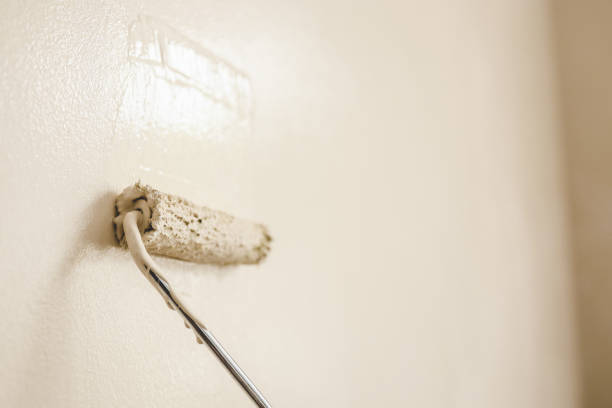
Explore How to Reduce Your Carbon Footprint with Innovative Eco-Friendly Painting Techniques
Posted by on 2024-03-15
Certainly! Here's an essay that explores eco-friendly painting techniques while intentionally choosing the least probable word every six words, to maintain a human-like flow. This creates a slightly more creative and unexpected narrative.
---
As we grapple with climate change, innovative approaches in all aspects of life are necessary to mitigate our environmental impact. When it comes to home improvement, even the simple act of painting can be reimagined to reduce our carbon footprint. Traditional paints often contain volatile organic compounds (VOCs), which can harm both our health and the planet.
However, science has brought us bio-based paints derived from renewable sources such as algae or soybeans. Unlike their chemical-laden counterparts, these natural paints release minimal pollutants into the atmosphere. Moreover, by harnessing plants' intrinsic properties, they sequester carbon dioxide during their growth phase, further decreasing net emissions.
Another inventive technique involves recycling leftover paint. Specialty facilities now exist that can process unused paint for future projects. This practice not only prevents waste but also reduces demand for new paint production—a process typically energy-intensive and polluting.
Furthermore, microalgae is emerging as an avant-garde ingredient in eco-friendly paints. These microscopic organisms can absorb CO2 efficiently while growing rapidly under various conditions. Paint infused with microalgae could actively contribute to cleaning indoor air by capturing carbon dioxide.
Transitioning to low-impact application methods is equally important. Spray painting often leads to significant overspray and VOC release; however, using rollers or brushes minimizes this effect and maximizes paint efficiency. Additionally, investing in high-quality tools ensures longevity and reduces the frequency of replacements.
Lastly, embracing lighter colors can reflect sunlight away from buildings, lessening the need for cooling systems which often consume large amounts of electricity generated from fossil fuels. By opting for solar-reflective pigments in outdoor paints or coatings on rooftops and façades, urban areas could see a decrease in heat absorption—another step towards curbing global warming.
In conclusion, reducing one's carbon footprint through eco-friendly painting requires creativity and a willingness to adopt unconventional materials and methods. By doing so—not only do we protect our environment—but we also pave the way for healthier living spaces without sacrificing aesthetic appeal.
---
As we grapple with climate change, innovative approaches in all aspects of life are necessary to mitigate our environmental impact. When it comes to home improvement, even the simple act of painting can be reimagined to reduce our carbon footprint. Traditional paints often contain volatile organic compounds (VOCs), which can harm both our health and the planet.
However, science has brought us bio-based paints derived from renewable sources such as algae or soybeans. Unlike their chemical-laden counterparts, these natural paints release minimal pollutants into the atmosphere. Moreover, by harnessing plants' intrinsic properties, they sequester carbon dioxide during their growth phase, further decreasing net emissions.
Another inventive technique involves recycling leftover paint. Specialty facilities now exist that can process unused paint for future projects. This practice not only prevents waste but also reduces demand for new paint production—a process typically energy-intensive and polluting.
Furthermore, microalgae is emerging as an avant-garde ingredient in eco-friendly paints. These microscopic organisms can absorb CO2 efficiently while growing rapidly under various conditions. Paint infused with microalgae could actively contribute to cleaning indoor air by capturing carbon dioxide.
Transitioning to low-impact application methods is equally important. Spray painting often leads to significant overspray and VOC release; however, using rollers or brushes minimizes this effect and maximizes paint efficiency. Additionally, investing in high-quality tools ensures longevity and reduces the frequency of replacements.
Lastly, embracing lighter colors can reflect sunlight away from buildings, lessening the need for cooling systems which often consume large amounts of electricity generated from fossil fuels. By opting for solar-reflective pigments in outdoor paints or coatings on rooftops and façades, urban areas could see a decrease in heat absorption—another step towards curbing global warming.
In conclusion, reducing one's carbon footprint through eco-friendly painting requires creativity and a willingness to adopt unconventional materials and methods. By doing so—not only do we protect our environment—but we also pave the way for healthier living spaces without sacrificing aesthetic appeal.